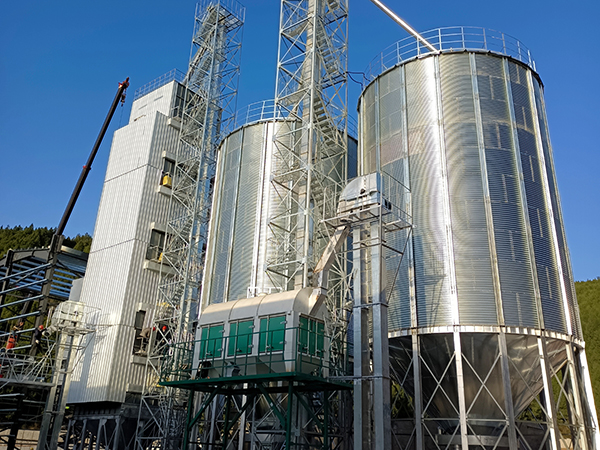Flour Silo Prices: Investment Analysis and Market Considerations
As a fundamental raw material in the food processing industry, flour’s storage conditions are crucial for ensuring product quality and reducing production costs. “Flour silo Prices” directly affects the initial investment and long-term operational costs for enterprises in raw material storage.
- Structure Composition of Wheat Silo in Uganda
- Main Advantages of Wheat Silo in Uganda
- Main Functions of Wheat Silo in Uganda
- Corn mill factory in Mali
- Maintenance Methods for Wheat Silo in Uganda
- Maintenance Methods for a Rice Silo in Uganda
- Wheat mill supplier in Malawi
- Installation Process of a Rice Silo in Uganda
- Structural Composition of a Rice Silo in Uganda
- Flour mill sale in Rwanda
- Main Advantages of Rice Silo in Uganda
- Primary Functions of Rice Silo in Uganda
Introduction: The Economic Significance of Flour Silos
As a fundamental raw material in the food processing industry, flour’s storage conditions are crucial for ensuring product quality and reducing production costs. “Flour silo Prices” directly affects the initial investment and long-term operational costs for enterprises in raw material storage. This article will analyze the factors influencing the price of flour silos, procurement strategies, and how to maximize cost-effectiveness.


Factors Influencing Flour Silo Prices
Understanding the factors that affect the prices of flour silo helps enterprises make more rational investment decisions.
Material and Manufacturing Costs
The manufacturing materials of the silo, such as stainless steel or carbon steel, and the complexity of the manufacturing process, are key factors affecting the price.
Technological Integration
Silos equipped with advanced functions like automatic temperature and humidity control and material conveying systems will have a higher price due to technological integration.
Capacity and Scale
The larger the capacity of the silo, the lower the unit storage cost, but the total price will be higher, which requires enterprises to make trade-offs based on their own needs.
Procurement Strategies for Flour Silo
A reasonable procurement strategy can help enterprises control costs while ensuring storage quality.
Needs Analysis
Enterprises should choose silos of the appropriate capacity based on their production scale and storage requirements.
Cost-Benefit Assessment
Assess different models and configurations of silos to select the most cost-effective product.
Supplier Selection
Choose suppliers with good reputations and quality services to ensure a smooth procurement process and reliable after-sales support.
Economic Analysis of Flour Silos
The purchase of a flour silo is a long-term investment, and its economic viability requires careful evaluation.
Initial Investment and Long-Term Returns
Although the initial investment is high, high-quality silos can reduce flour loss and improve storage efficiency, leading to long-term returns.
Operating Costs
Consider the operating costs of the silos, including energy consumption and maintenance expenses.
Total Cost of Ownership
Assess the total cost of ownership of the silos, including procurement costs, operating costs, and potential maintenance expenses.
Conclusion: Flour Silo Prices and Corporate Development Strategy
“Flour silo Prices” is a factor that enterprises must consider when formulating raw material storage strategies. By comprehensively considering market conditions, their own needs, and long-term development, enterprises can make wise procurement decisions to maximize the cost-effectiveness of raw material storage.










